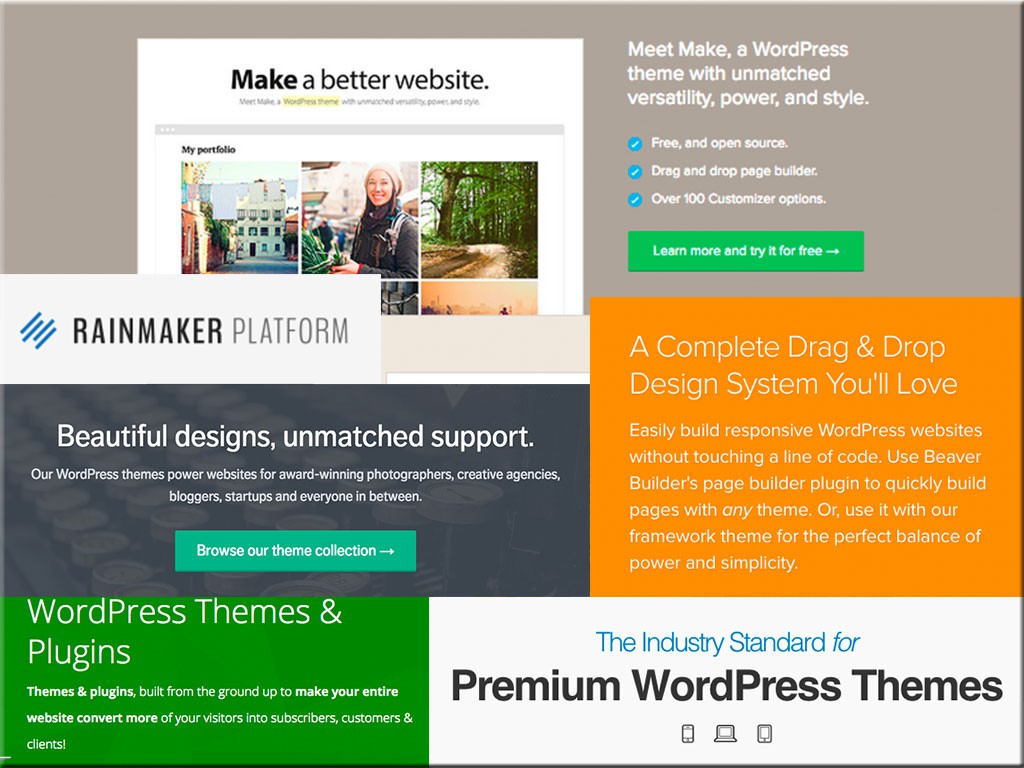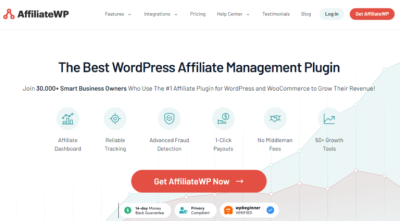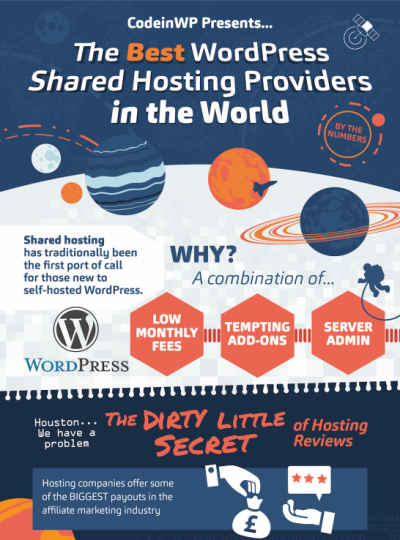Choosing the right WordPress template is like picking the perfect outfit for an important event — it sets the tone and makes a great first impression. Your website’s look and feel aren’t just about aesthetics; they influence how visitors perceive your brand, how easy it is to navigate, and ultimately, how well your site performs. WordPress templates, or themes, are pre-designed layouts that you can customize to match your style and needs. They simplify the design process, save you time, and ensure your website is both beautiful and functional. In short, the right template can make or break your online presence, so it’s worth choosing carefully.
Factors to Consider When Selecting a WordPress Template

Picking the perfect WordPress template might seem overwhelming with so many options out there, but keeping a few key factors in mind can make the decision much easier. Here’s what you should consider:
- Purpose of Your Website: Are you creating a blog, an online store, a portfolio, or a business site? Different templates are optimized for different goals. For example, e-commerce templates have built-in shopping features, while portfolio themes highlight visual work.
- Design and Flexibility: Look for a template that aligns with your brand style. Does it offer customizable options like color schemes, fonts, and layout variations? The more flexible it is, the easier it will be to make it truly yours.
- Responsiveness: Your site should look great on desktops, tablets, and smartphones. Check if the template is mobile-friendly and responsive, ensuring a seamless experience for all visitors.
- Compatibility and Updates: Make sure the theme is compatible with the latest version of WordPress and popular plugins you plan to use. Regular updates from the developer indicate ongoing support and security.
- Speed and Performance: A slow website can turn visitors away. Choose a lightweight, optimized template that loads quickly to keep your bounce rates low.
- SEO-Friendliness: An SEO-optimized theme helps your site rank higher on search engines. Look for themes that follow best practices for coding and structure.
- Support and Documentation: Good support from the theme developer and comprehensive documentation can save you headaches down the line. Check reviews or forums to see how responsive they are.
- Cost: Templates range from free to premium. While free themes are tempting, premium ones often come with more features, updates, and support. Consider your budget and needs carefully.
By keeping these factors in mind, you’ll be better equipped to choose a WordPress template that not only looks great but also performs well and grows with your website. Remember, the goal is to find a balance between style, functionality, and ease of use. Happy hunting!
3. Popular Types of WordPress Templates for Different Website Goals
When you’re diving into the world of WordPress templates, one of the first things to consider is what kind of website you’re building. Different templates are designed with specific goals in mind, so choosing the right type can make a huge difference in how your site looks and functions. Let’s explore some of the most popular types of WordPress templates and what they’re best suited for.
Business & Corporate Templates
If you’re creating a professional website for a business, corporate site, or consultancy, these templates are a great choice. They typically feature clean, polished designs with sections for services, team members, contact info, and client testimonials. They’re optimized to convey trust and professionalism, making them ideal for B2B companies, startups, or established firms.
Portfolio & Creative Templates
Designed for artists, designers, photographers, or anyone showcasing their work, portfolio templates put visuals front and center. They often feature fullscreen sliders, grid-based galleries, and minimalistic layouts that highlight your creativity. These templates help you tell your story visually and attract potential clients or collaborators.
Blog & Magazine Templates
If content is king for you—whether it’s personal blogging, news, or magazine-style sites—these templates are built with readability and content organization in mind. They often include multiple post layouts, easy-to-navigate categories, and social sharing features. They’re perfect for writers, journalists, or hobbyists who want to share their ideas with the world.
eCommerce Templates
Planning to sell products online? eCommerce templates integrate seamlessly with WooCommerce, giving you a powerful platform to manage products, payments, and shipping. These templates come with shopping cart features, product pages, and secure checkout options, making it easier to turn your website into a storefront.
Nonprofit & Charity Templates
These templates are crafted to help organizations raise awareness and funds. They often include donation forms, event calendars, and volunteer sign-up sections. Their designs tend to be warm, inviting, and focused on storytelling to connect emotionally with visitors.
4. How to Evaluate the Compatibility and Customization Options of Templates
Once you’ve identified the type of template that suits your website goals, next comes the crucial step: making sure it’s compatible with your needs and offers enough room for customization. Here’s how you can evaluate these aspects effectively.
Check Compatibility with Your Plugins and WordPress Version
- Ensure the template is compatible with the latest version of WordPress to avoid security and performance issues.
- Verify that it works well with essential plugins you plan to use, such as SEO tools, contact forms, or eCommerce plugins like WooCommerce.
- Look for reviews or support forums to see if other users have encountered compatibility problems.
Assess Customization Options
- Design Flexibility: Does the template allow you to easily change colors, fonts, and layouts without coding? Look for options like theme customizer or page builders.
- Page Builder Compatibility: Many templates support drag-and-drop builders like Elementor, Beaver Builder, or WPBakery. This can make customizing your site much more straightforward.
- Template Structure: Check if the template offers multiple header styles, footer layouts, and widget areas, so you can tailor the design to your needs.
- Pre-built Sections & Demos: Does the template come with ready-to-import demos or sections? These can save you a ton of time in setting up your site.
Responsive & SEO Optimization
- Make sure the template is fully responsive, meaning it looks great on desktops, tablets, and smartphones.
- Check if the template is coded following best SEO practices to give your site a better chance of ranking well in search engines.
Taking the time to evaluate these aspects can save you headaches down the line and ensure your website is both functional and visually appealing. Remember, a good template should serve as a flexible foundation, allowing you to create a unique site that truly reflects your brand or purpose.
5. Tips for Installing and Customizing Your Chosen WordPress Template
So, you’ve picked out the perfect WordPress template — great! Now comes the exciting part: installing and customizing it to make your website uniquely yours. Don’t worry, it’s pretty straightforward, and I’ll walk you through some helpful tips to get you started smoothly.
Step 1: Backup Your Website before making any changes. Just in case something doesn’t go as planned, having a backup ensures you can restore your site quickly without losing any content or settings.
Step 2: Install Your Template — head over to your WordPress dashboard, then navigate to Appearance > Themes. Click on Add New, then either upload your theme file if you purchased it from a third-party site or search for it if it’s available in the official repository. Once uploaded or found, click Install and then Activate.
Step 3: Explore the Theme Options — most modern themes come with a dedicated options panel, often powered by plugins like WordPress Customizer or Theme Options. Spend some time exploring these settings. You can typically customize colors, fonts, header layouts, footer sections, and more without touching a single line of code.
Tip: Use a staging environment if possible. Many hosting providers offer this feature, allowing you to test customizations without affecting your live site.
Step 4: Customize Your Site Content — replace demo content with your own text, images, and branding. Use the built-in page builders or the default Gutenberg editor to craft your pages. Play around with widgets and menus to organize your site navigation effectively.
Step 5: Fine-tune the Design — adjust padding, margins, and spacing for a clean look. Remember, sometimes less is more, so opt for a simple, user-friendly design. Preview your changes regularly to see how everything looks live.
Step 6: Install Essential Plugins — enhance your site’s functionality with plugins like SEO tools, contact forms, caching, and security. Just be cautious not to overload your site with too many plugins, which can slow it down.
Tip: Keep your theme and plugins updated. Updates often include security patches and new features that keep your website running smoothly and securely.
6. Top Resources for Finding High-Quality WordPress Templates
If you’re looking to expand your options or want to discover new themes, there are some fantastic resources out there that showcase high-quality WordPress templates. Here’s a list of trusted sources where you can find both free and premium themes:
| Resource | Description | Best For |
|---|---|---|
| WordPress.org Themes | The official repository of free themes maintained by the WordPress community. Offers thousands of themes that are regularly updated and reviewed for quality and security. | Free themes, beginners, quick setup |
| ThemeForest | A large marketplace for premium themes from various developers. Themes here are often feature-rich and customizable, with detailed reviews and ratings. | Premium themes, professional designs |
| Elegant Themes | Known for their flagship Divi theme and builder, Elegant Themes offers high-quality, versatile templates designed for ease of use and customization. | All-in-one solutions, beginners to experts |
| Themify | Offers a collection of stylish, responsive themes along with a powerful drag-and-drop page builder. Great for creative and business websites. | Creative agencies, small businesses |
| StudioPress | Creators of the Genesis Framework, StudioPress provides lightweight, SEO-friendly themes optimized for performance. | Developers, SEO-conscious users |
| Colorlib | Provides a variety of free themes that are modern and mobile-friendly, perfect for bloggers, portfolios, and small business sites. | Free, trendy designs for various niches |
Remember, when choosing themes from these resources, always check for compatibility with your WordPress version, read reviews, and verify that the developer provides regular updates. This ensures your website stays secure, performs well, and looks professional.
Happy theme hunting! With the right template and some customization, your website will stand out and serve your visitors beautifully.
Conclusion and Final Tips for Choosing the Perfect WordPress Template
Selecting the right WordPress template is crucial for creating a website that is both visually appealing and highly functional. To make the best choice, consider your website’s purpose, target audience, and long-term goals. Remember, a good template should offer flexibility, responsive design, and easy customization options. Prioritize templates that are regularly updated to ensure compatibility with the latest WordPress versions and security patches.
Here are some final tips to guide your decision:
- Check reviews and ratings to gauge user satisfaction and potential issues.
- Review demo sites to see how the template looks and functions in real-world scenarios.
- Ensure compatibility with essential plugins you plan to use.
- Assess support options provided by the theme developer, such as documentation and customer service.
- Test responsiveness across various devices to guarantee a seamless user experience.
Ultimately, the perfect WordPress template aligns with your brand identity, offers room for growth, and provides a user-friendly editing experience. Take your time to research and compare options—investing effort upfront will pay off in the long run by simplifying your website management and enhancing your visitors’ experience.


